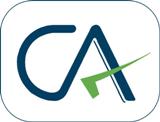Income tax scrutiny is a detailed examination of an individual’s or business’s tax return by the Income Tax Department. It is conducted to verify the accuracy of the income declared and deductions claimed. The scrutiny process ensures that taxpayers comply with tax laws and do not underreport income. Scrutiny notices are issued under Section 143(2) of the Income Tax Act. There are different types of scrutiny, including limited scrutiny, complete scrutiny, and compulsory scrutiny. Limited scrutiny focuses on specific issues identified in the tax return. Complete scrutiny involves a thorough examination of all aspects of the tax return. Compulsory scrutiny is selected based on certain risk parameters defined by the department. Selection for scrutiny can be random or based on discrepancies found in tax filings. High-value transactions, mismatched TDS details, and large cash deposits may trigger scrutiny. Non-disclosure of foreign income or assets can also lead to scrutiny. The tax department issues scrutiny notices requiring the taxpayer to submit supporting documents. Taxpayers must respond to scrutiny notices within the specified deadline. Supporting documents may include bank statements, invoices, balance sheets, and tax audit reports. Non-compliance with scrutiny notices can lead to penalties and additional tax liabilities. The assessing officer may ask for explanations regarding certain deductions and exemptions. If discrepancies are found, additional tax demands may be raised. Taxpayers have the right to challenge scrutiny assessments by filing an appeal. The scrutiny process may involve face-to-face meetings with tax officials. In some cases, scrutiny can be conducted through e-assessment to reduce physical interaction. Maintaining proper books of accounts and records helps in handling scrutiny efficiently. Taxpayers should ensure that their tax return matches Form 26AS and AIS reports. Frequent revisions in tax returns may increase the chances of scrutiny selection. Underreported income or inflated deductions can lead to higher scrutiny risks. Businesses must ensure that their financial statements are accurate and properly audited. GST and income tax records must be reconciled to avoid mismatches. Professionals and self-employed individuals should keep track of their invoicing and expenses. If the taxpayer provides satisfactory responses, the scrutiny assessment may be closed without adjustments. In case of tax demand, penalties and interest may be levied based on the findings. Expert advice from tax professionals can help taxpayers respond effectively to scrutiny notices. Timely and accurate tax filing reduces the chances of being selected for scrutiny.
